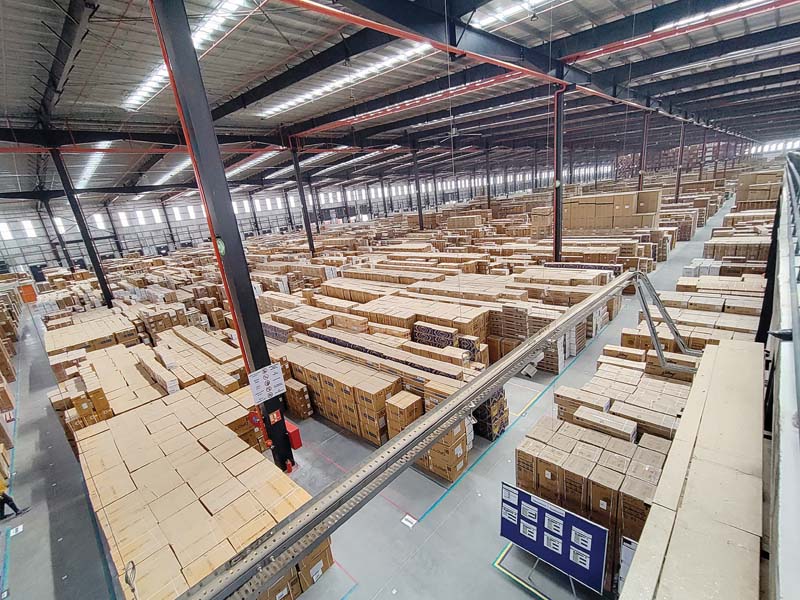In an industry talk session, Rampraveen Swaminathan, Managing Director and Chief Executive Officer at Mahindra Logistics Ltd. SPEAKS with Ashish Bhatia on adding agility and volume to a multi-client fulfilment and distribution centre.

Q. How do you continue to challenge the status quo of 3PL?
A. The challenge in 3PL has always been that customers in India have always wanted to design our supply chain. Where we are trying to disrupt it is by integrating more. We believe there are increasing trends to support actual integration across the supply chains giving shape to significant improvements in the end product outlay. We can actually move and take all services together, bundle these and get a lot more visibility into the supply chain. It makes it more agile and expansive with a high-volume handling capability for a multi-client fulfilment and distribution facility. Coupling multiple services together and having more control over the entire operation is how we are trying to challenge or disrupt the system.
Q. How do the flagship warehouse and recent additions add up to a pan-India multi-client handling capability?
A. We are building a multi-client facility, we have right now about four million square feet under construction, of which 2.6 million is already completed. 1.4 million is actually under fairly advanced construction. I think we will launch two facilities in the next three months, uh, fairly large ones. So, four million is already under construction, and under two million contracted. So that tallies around six million and then we plan to build another three million. So that totals around nine million square feet. But, I think that the answer is not the square feet, square feet is a nice number. I think what we are trying to do is build a network across the country. It starts at Luhari and ends at Coimbatore and in the middle we are trying to cover all the major cities: Bhiwandi, Nashik, Jaipur, Ahmedabad, Karnataka, Hosur, Chennai, Kolkata, and Patna to name a few. Each of these will be a gateway of access to the major metros. The network is focused on customer coverage within a 200 km radius of the closest facility and that is to ensure the quick movement and delivery of commodities.
 Q. What is the current capacity utilisation? Is there excess capacity and underutilisation courtesy a low sentiment and fears of recession looming large?
Q. What is the current capacity utilisation? Is there excess capacity and underutilisation courtesy a low sentiment and fears of recession looming large?
A. No, we have planned under utilisation. So, we do plan that two to three per cent will always be under-utilised and lying vacant. Cause we are switching clients, and in the transition some customer sites are under construction. We are free from the market pressures and or market and confident in our capabilities. There is an advanced planning stage wherein we prepare for such a trough, but no such under utilisation is there on the whole.
Q. How are you dealing with higher inventory lead times and the non-predictability around it?
A. I think what is happening, the mind set of the customers before was just building a network.Today customers, supply chain leaders are growing leaner. Now the same CEOs are changing with times. And so people want to have plan B, plan C and even a plan D. This has led to higher inventory accumulation across the country. People are stocking up with the apprehension of not just Covid-19 but the China plus one policy and the Russia-Ukraine conflict. The market is more volatile than ever and this leads to new patterns where contingencies have taken priority. No company wants to be caught in a situation where they are at a standstill and since 2020, multiple factors have stalled the market and movement.
Q. Has the supply-chain restructuring at most OEMs and an alternative procurement strategy like China+1 impacted business directly?
I think plus one is a great thing. I think one, making those changes are difficult. If we look at it from a pragmatic approach, it will reveal the true nature of that task. I think displacing is not so easy. The China plus one changes quite a lot as a pivot. So, there are places like electronics where traction has seen a boom because of the electronic PLI scheme but it has its own set of challenges too like the chip shortage. And many countries are practising the plus one strategy. In the United States, many North American companies look at Mexico as the plus one, and similarly in the east some companies look at Vietnam as the plus one. So, we have two questions: Can we implement plus one quickly enough and second is determining who will be the plus one? We also have the ‘Make in India’ initiative that has given birth to a new wave in the market, so all these policies also play a crucial role in shifting pressure in the import and export realms. It nudges companies to resort to more exports and an effort to produce goods and source raw materials from within the borders. It is still at its nascent stage and with time a more definitive and reliable solution will surface.



















